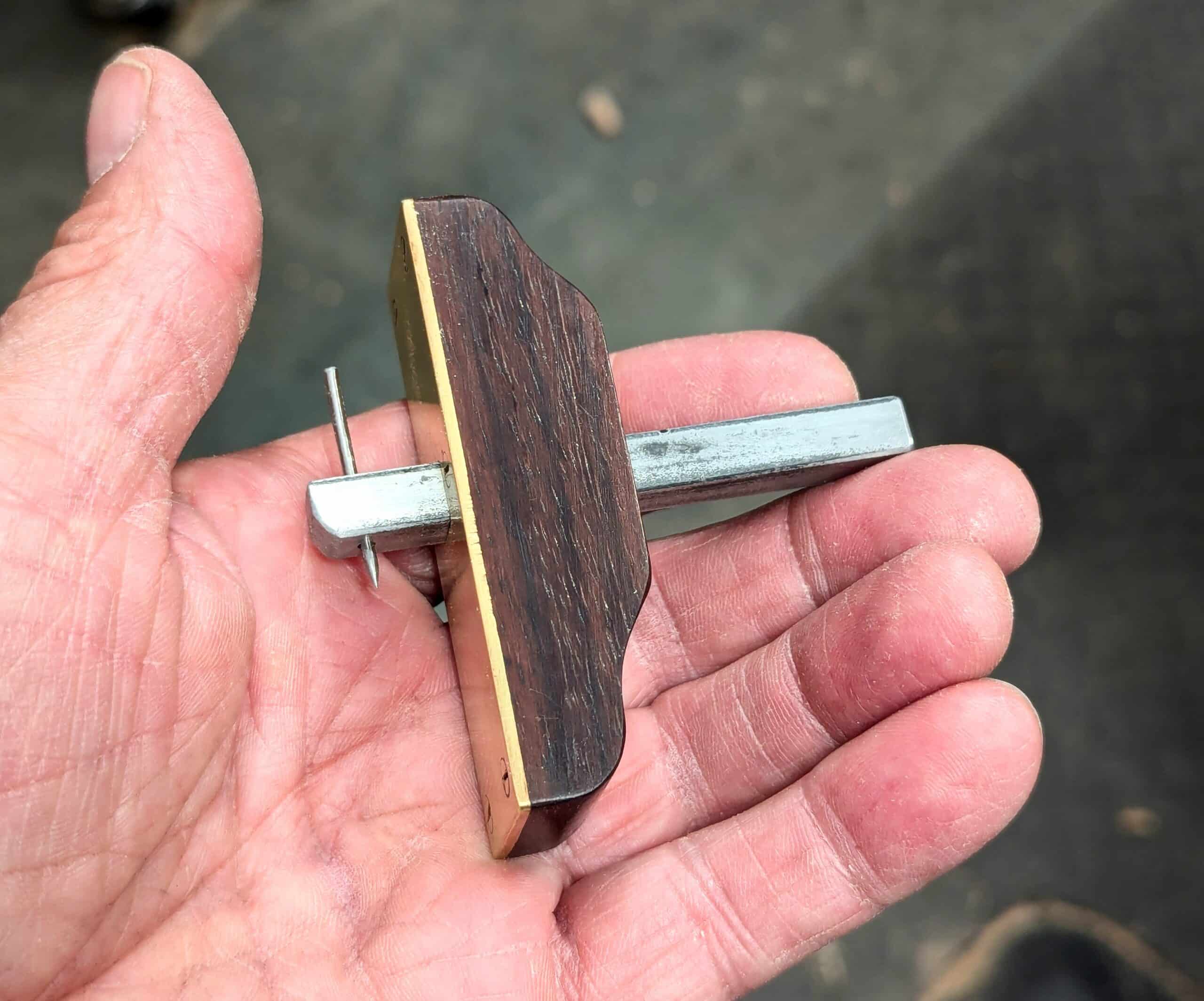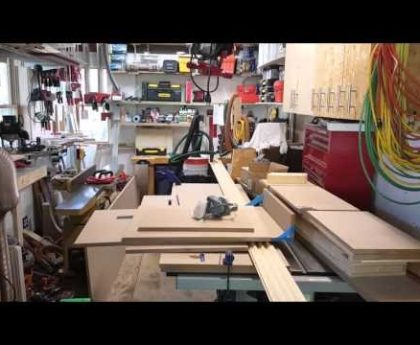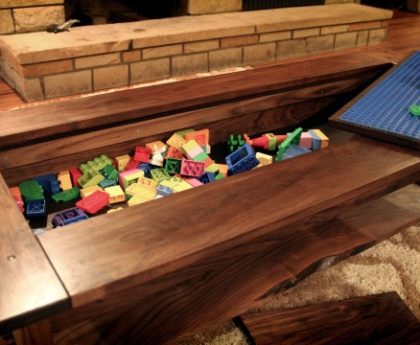Gifts as simple as this are rare finds these days and even more rarely given. When Hannah made this for me, it was unexpected. She has one just like it that she found and enjoyed and I had admired it when I saw it for the first time. Hannah made this one for me and gave it to me a few weeks ago. I have many marking gauges and the variety ranges from Victorian ebony ones with micro-adjustability via threaded brass rods to wedge-stem versions and then those I have devised myself as better ergonomic designs. When she gave me the one she had made I put it on the bench to see which one or ones I would reach for after a week or two. I ended up with just two. One was my own, the one that follows the Stanley design that has the pin passing through from one corner to the opposite corner and so ensures the point of the pin can always be seen and that you are able to reach right into the tightest internal corners. The other is Hannah’s. On the one hand, I just like its compact size, but what I love is handmade pieces. You know, those pure works of art made from recycled materials or just using something that’s been totally scrapped by one person and made into something new and unique by another.
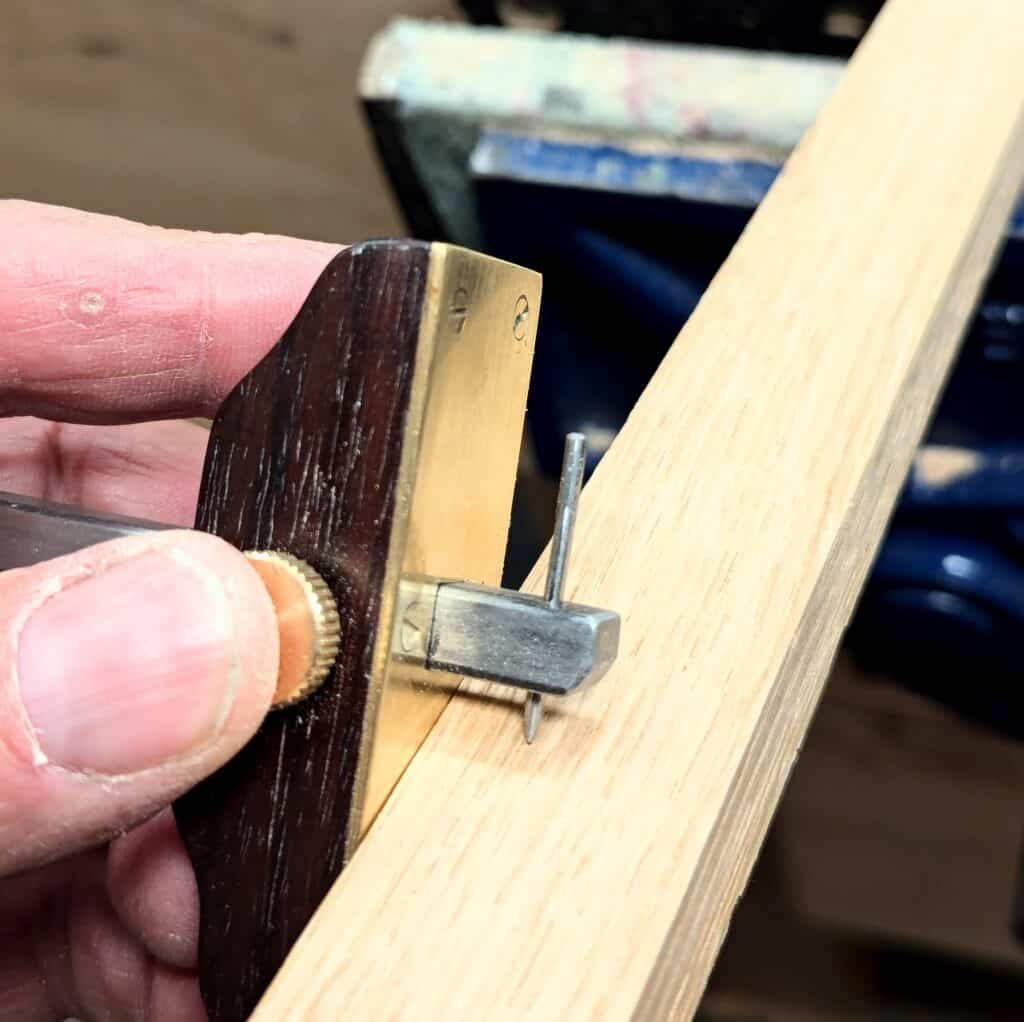
For this tool, Hannah used part of a brass door plate for a wear surface, a short section of 1/16″ diameter piano wire for the 1 1/4″ long pin, a scrap of rosewood from a salvaged cabinet and a door knob spindle for the stem. The six brass screws were new and so too the 6mm by 12mm long brass thumbscrew. The workmanship is very lovely.
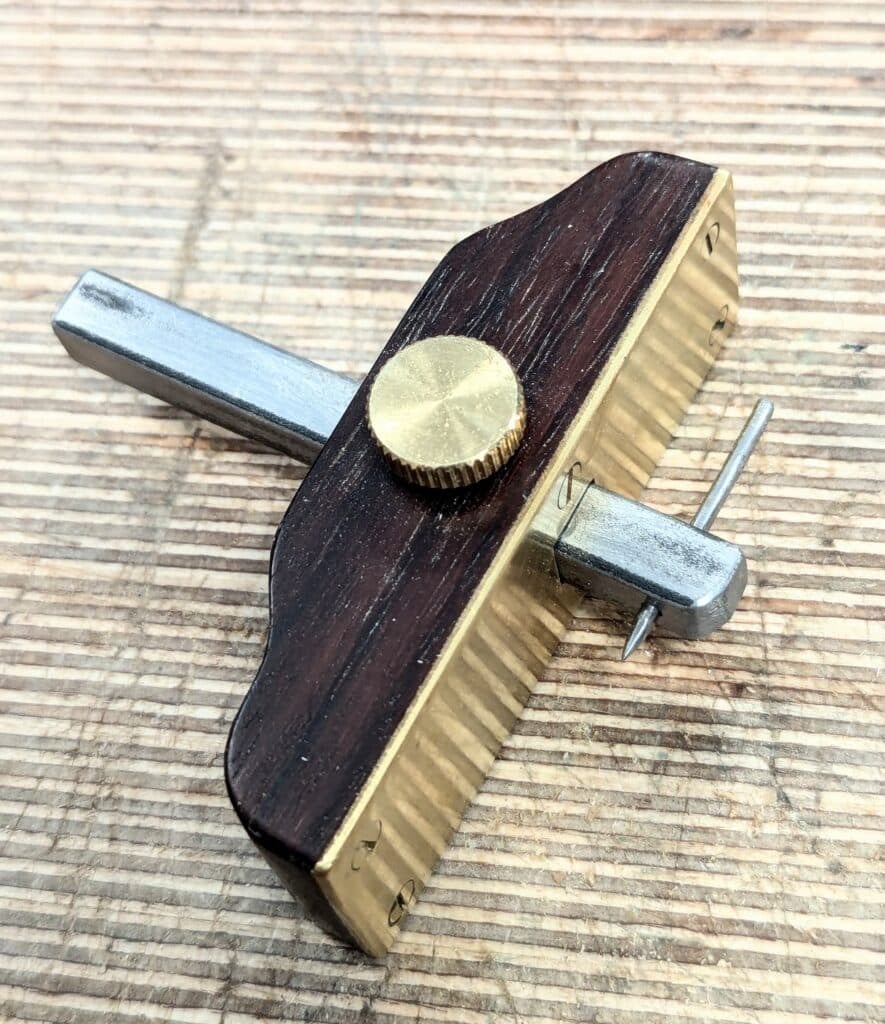
I often wonder about homemade tools like this, and how many are hidden or lost or simply left and no longer used in toolboxes around the world. Going back in the history of crafts, most tools would at one time have been craftsman-made and without income productivity in mind at all. In our evolving culture, we only buy the tools we use but in the pre-industrial era before the Industrial Revolution predicating commercial manufacturing and mass-making, the ancients took wood and metal to create maker-made tools to match the work they did according to need. A woodworker worked with metal smiths like blacksmiths to hammer out twist auger bits and penny braces, cutting blades for planes and chisels. When you see one in a container on a floor somewhere your eye locks onto the patina that only comes from being well-used for a century and more. Unquestioningly, you know its age and its functionality, but then it’s by feel, look and the lack of a commercial name that you date it and understand its real value to its former owner and maker.
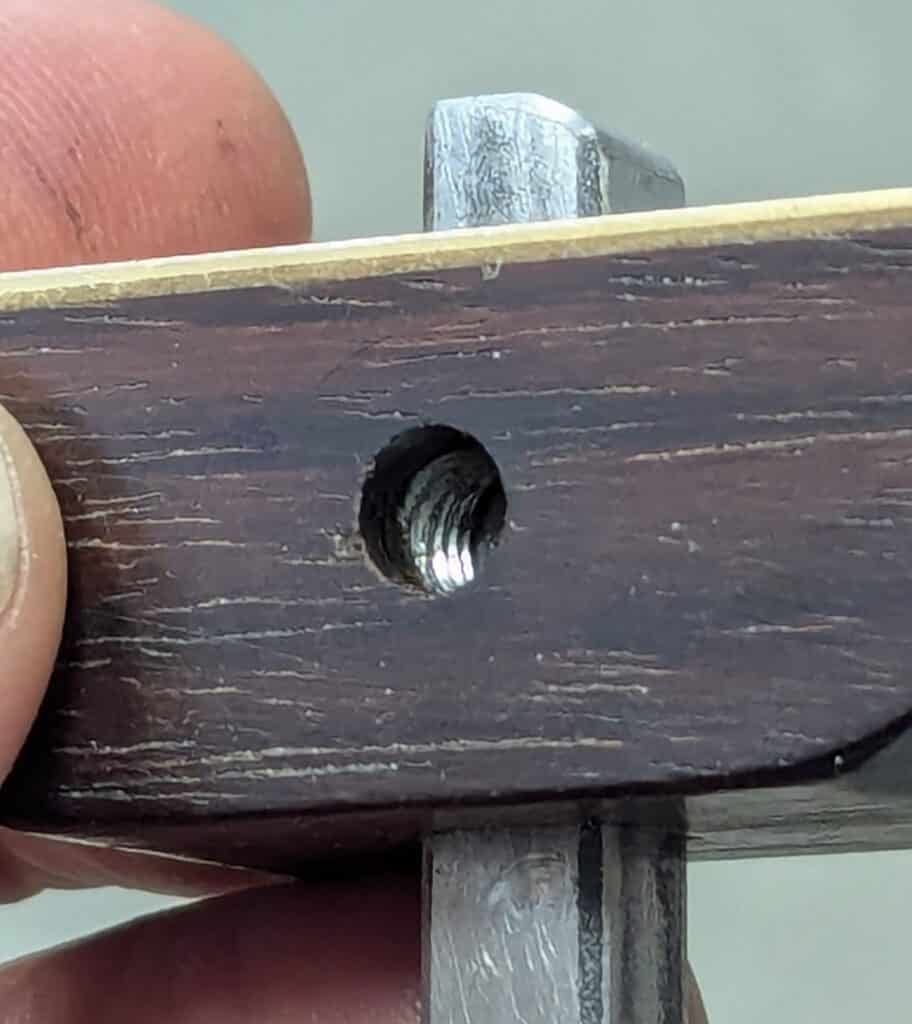
Behind the brass plate, Hannah recessed a nut corresponding to the size of the 6 mm thread of the thumbscrew. Quite tricky to get it to align but align it does.
And here is a rough drawing to work to if you decide to make one.

